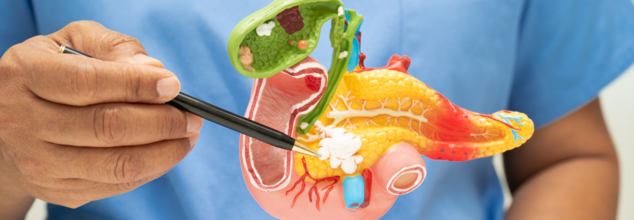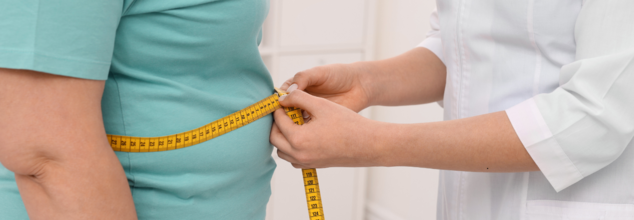- Health Conditions A-Z
- Health & Wellness
- Nutrition
- Fitness
- Health News
- Ayurveda
- Videos
- Medicine A-Z
- Parenting
- Web Stories

(Credit-Canva)
Tired Of Making Frequent Night Trips To The Bathroom? Tips To Fix It
A negligible part of our daily lives is using the loo to relieve ourselves and most of us do not pay attention to how many times we are using it or when. However, the urge to go can often come at inconvenient times. We've all been there: you're cozy in bed, ready to sleep, and suddenly you have to pee. It's frustrating to get up, turn on the lights, and disrupt your sleep. For some, this happens occasionally.
For others, it's a nightly struggle and it is known as Nocturia. If you wake up to pee at least once a night, you might have nocturia. It's very common, according to a the Sleep Foundation it affects about 40% of adults aged 18 to 79. For older adults, that number jumps to 80%. All those bathroom trips can make you tired and increase your risk of falls. Luckily, there are ways to manage it.
Why Is Nocturia A Cause Of Concern?
The Urology Care Foundation explains waking up a lot at night to pee is a problem because it messes up your sleep. This makes you tired during the day. It's common, especially as you get older. It might be caused by simple habits, or it could be a sign of a bigger health issue. Your body might be making too much pee, especially at night, or your bladder might not be working right. Since your excretory system is complex, and involves your kidneys, bladder, and brain. Problems like nocturia mean something might be wrong.
Ways You Can Lessen Frequency Nighttime Bathroom Visits
Waking up at night to pee can be caused by simple things like drinking too much before bed, especially caffeine or alcohol, or even just getting used to waking up to go. It can also be from certain medicines or sleep problems. But sometimes, it's a sign of a health issue like diabetes, heart problems, bladder issues, prostate problems, or even just leg swelling.
Simple Changes to Your Daily Life
You can make small changes to your habits to pee less at night. Try drinking less before bed and avoid caffeine and alcohol in the evening. Raising your legs before sleep can also help. These simple changes can reduce how often you wake up to use the bathroom.
Making Nighttime Bathroom Trips Safer
If you still need to get up at night, make sure it's safe. Use night lights to see and clear any tripping hazards. If you have trouble moving, keep a urinal or commode nearby. This helps prevent falls and makes it easier to get back to sleep quickly.
Improving Your Sleep Habits
Good sleep habits help you fall asleep and stay asleep. Keep a regular sleep schedule, have a relaxing bedtime routine, and learn relaxation techniques. Exercise daily and make your bedroom comfortable. A dark, quiet, and cool room helps you sleep better, even if you wake up to pee.
Talking to Your Doctor About Nocturia
If you're waking up often to pee, talk to your doctor. They can figure out why it's happening. It might be a health problem or a simple habit. Your doctor can suggest ways to fix it, like medicine or lifestyle changes. Getting their advice is the first step to better sleep.
Medical Help for Nocturia
Sometimes, nighttime bathroom trips are caused by a medical condition. If so, treating that condition can help. Your doctor might give you medicine to reduce how often you need to go. They may also change your current medications. This medical help can make a big difference in your sleep.

(Credit-Canva)
Look Out For These 2 Unusual Signs Of This Rare Form Of Cancer
Being the leading cause of death worldwide, cancer has devastated many families throughout the globe with nearly one out of six deaths being attributed it. According to the World Health Organization (WHO) the most common forms of cancer are breast (2.26 million cases), lung (2.21 million cases), colon and rectum cancer (1.93 million cases), etc. Characterized by malignant growths on a particular part of the body, this chronic condition can be caused by physical carcinogens such as ultraviolet and ionizing radiation or chemical carcinogens like tobacco or asbestos.
While one may know about the common forms of cancer, it can often affect unlikely places in our body as well. These cases, although rare, have some specific symptoms which if you know, can help you get an early diagnosis and intervention. Liver Cancer UK highlights one such type of cancer which has two distinct symptoms of this rare form of cancer: Bile duct cancer.
What is Bile Duct Cancer?
Affecting about 2000 people in the UK per year, bile duct cancer does not occur due to family history. In fact, early bile duct cancer may not even cause symptoms other than a loss of appetite, making it difficult to diagnose early. This cancer happens when the cell lining f the bile duct multiplies and grows more than it should. These bile ducts are all over the liver, connecting it to the gallbladder, small intestine and are supposed to help release bile for digestion after we eat.
Unusual Symptoms Of Bile Duct Cancer
Some of the most pivotal signs of bile duct cancer can only be seen when you use the bathroom. Two changes to watch out for are pee that is much darker or very pale, and poop that is pale and looks like putty or clay.
Both of these toilet changes can be signs of jaundice, which means your liver is under a lot of stress. When it comes to bile duct cancer, these signs might mean that the cancer has blocked the tubes connected to your liver. This blockage can cause a liquid called bile to leak into your blood and other parts of your body. Another main sign of jaundice is your skin and the whites of your eyes turning yellow, and also itchy skin.
Other Symptoms To Look Out For
Besides the changes in urine and stool, there are other signs of bile duct cancer that you must be aware of. These include losing weight without trying, feeling pain or discomfort in your belly (usually on the right side), feeling like you have the flu with fever and being tired, and also not feeling hungry. Liver Cancer UK says that these signs can also be caused by other health problems, but if you have them, you should still see your doctor to get advice. This is because if it is cancer, finding it early can make a big difference in how well treatment works.
While researchers aren’t sure why bile duct cancer happens, Liver Cancer UK says it's not always related to drinking alcohol. The charity says that it's not clear if alcohol is even linked to this type of cancer. Like many other cancers, getting older makes it more likely to happen, with most people who get it being between 50 and 70 years old

(Credit-Canva)
This Everyday Personal Item Can Become As Breeding Ground For Bacteria
People expect places like bathrooms, toilets and washbasins to be the dirtiest things in our home. However, there are many things and places in our homes that are much worse than these. According to research done by Philip Tierno Jr., Ph.D., a microbiologist and immunologist, your carpet may contain 4000 times more bacteria than your toilet seats. Other places that have a lot of bacteria and you may not be aware of include your kitchen sink, doorknobs, light switches microwave etc. Something you may have realized is how many of these items are daily use and negligible in most hygiene conversations.
These are everyday use items that can be the biggest reason for one falling ill and one such item that you may be carrying around everywhere is your reusable water bottle. Dr. Myro Figuara, who is an Anesthesiologist and current chief medical officer and co-founder of HealFast, took to social media to share this fact with people. In the video he explained that if you just keep filling up the same water bottle every day without washing it, you should probably stop. He shared a video explained that filling up the same bottle every day without washing is a disaster waiting to happen. The video explained that your bottle can become a place where lots of germs grow. Every time you take a sip, bacteria from your mouth, hands, and even the air can get trapped inside.
Your Water Bottle Can Be As Dirty As Your Toilet
Dr. Myro agreed with this and said that even if you only put water in your bottle, you still need to wash it every day. He even said that your water bottle could be as dirty as a toilet seat! He mentioned a study that found some water bottles had way more germs than a toilet seat. He especially pointed out that the lids of the bottles are a favorite spot for germs to multiply.
A study by a group called WaterFilterGuru found that water bottles with a spout lid are really good at growing bacteria. They found an average of 30 million of these germs' groups in those bottles. Bottles with a squeeze top were much cleaner, with only about three million groups. This shows that not only are there a lot of germs, but they can also grow quickly.
Why Are These Germs A Cause of Concern?
The study found mostly a type of germ called gram-negative bacteria, which can cause infections that are hard to treat with medicine. They also found another type of germ in bottles with straws that can cause tummy troubles. Dr. Myro said it's really important to wash your water bottles every day and clean them deeply once a week. He warned that not doing this can make you sick right away, and being around mold and germy buildup for a long time can cause long-term health problems. Here are some tips to keep your reusable water bottles clean and germ free for health.
Wash every day
Scrub your bottle with warm, soapy water after you use it. Don't forget to scrub the parts where germs like to hide, like the screw threads, the spout, and any rubber seals.
Let it dry
After washing, let your bottle dry completely in the air before you put the lid back on. Germs like to grow in wet places.
Deep clean once a week
You can use things like vinegar or baking soda to clean it well, or just put it in the dishwasher if it's safe to do that.
Don't leave stagnant water in your bottles
Finally, the doctor warned against leaving water sitting in your bottle for a long time when you're not using it. He told people to empty their bottles when they are done drinking.

Credits: Canva
These Are The 10 Most Obese States In US
There has been a rise of many weight loss medicines like Ozempic and Wegovy. This has said to help America's battle with obesity, but has also prompted questions as to where the country is heading. If it really is a health epidemic?
As per the Centers for Disease Control and Prevention (CDC), 2 in 5 American adults are obese, and they have a body mass index of above 30. While body mass index (BMI) is not the best and reliable way to consider someone as overweight or obese, it does give insights on healthy lifestyle. The condition is also associated with a host of serious medical issues. If you are overweight or obese, you are more prone to have a stroke, or develop diabetes, experience heart attack or even have cancer. It is also estimated to cost the country's health care system nearly $173 billion a year.
US News, as part of its 2025 Best State rankings has released a list of top 10 obese states in America, based on their reported data from the Behavioral Risk Factor Surveillance System. This is based on a partnership between the CDC and the state health departments.
39 of the 50 states with available data for 2023 posted age-adjusted obesity rates of 30% or more. Three of them has hit a threshold of at least 40%.
Here are the Top 10 States in the United States With Highest Obesity Rates
- At top, we have West Virginia, with an obesity rate of 41.7%
- Then comes Arkansas, at 40.5%
- Next up is Mississippi at 40.4%
- At fourth position is Louisiana at 39.9%
- Alabama is at 39.4%
- Oklahoma is at 39.0%
- Iowa is at 37.9%
- Kentucky is at 37.8%
- Indiana is at 37.8%
- Tennessee is at 37.8%
The top 10 US states with the lowest obesity rates are:
- Colorado at 24.6%
- Hawaii at 26.8%
- Massachusetts at 27.1%
- California at 27.7%
- New York at 27.9%
- New Jersey at 28.5%
- Vermont at 29.0%
- Connecticut at 29.2%
- Florida at 29.7%
- Montana at 30.2%
Other Facts And Figures Around Obesity In US
As per the National Institute of Diabetes and Digestive and Kidney Diseases, a person whose weight is higher than what is considered to be a normal weight for a given height is described as being overweight or having obesity.
As per 2017 and 2018 data from the National Health and Nutrition Examination Survey (NHANES), nearly 1 in 3 adults are overweight. The data also states that more than 2 in 5 adults have obesity, while 1 in 11 adults have severe obesity.
The data also notes that about 1 in 6 children and adolescents ages 2 to 19 are overweight. Almost 1 in 5 children and adolescents ages 2 to 19 have obesity and about 1 in 16 children and adolescents ages 2 to 19 have severe obesity.
As per a 2024 Lancet Study, titled, National-level and state-level prevalence of overweight and obesity among children, adolescents, and adults in the USA, 1990–2021, and forecasts up to 2050, nearly 3 in 4 adults in the US are now considered overweight or have obesity.
Many experts have called this as a silent killer as it leads to bone and joint problems, diabetes, high blood pressure, high cholesterol, heart disease, sleep apnea, cancers and stroke.
The best way to deal with this it to keep your weight in check, check the nutritional levels of food items you buy, and snack smarter.
© 2024 Bennett, Coleman & Company Limited

